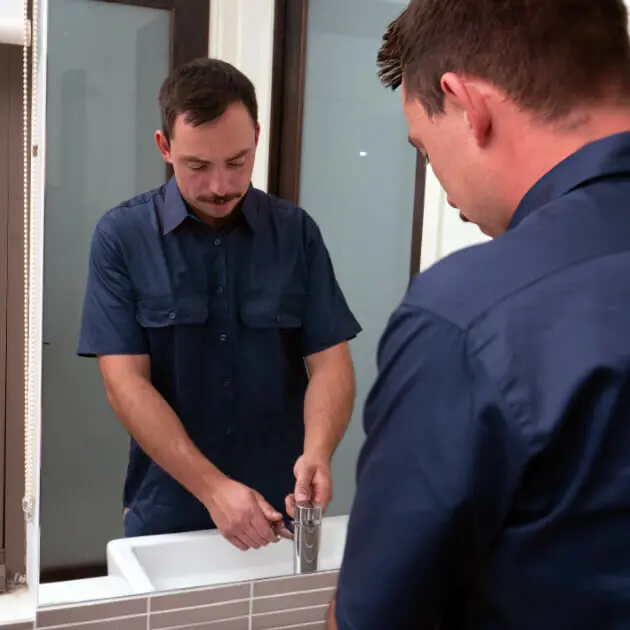Crucial Bathroom Plumbing Insights for First-Time Homeowners
Crucial Bathroom Plumbing Insights for First-Time Homeowners
Blog Article
Just about every person seems to have their unique conception on the subject of 11 Must-Read Tips for Plumbing a New House.

For brand-new homeowners, understanding and preserving bathroom pipes can save both time and money by avoiding expensive issues down the line. Below are some necessary bathroom plumbing tips to help you keep everything running smoothly.
Prepare for Winter
Shield your pipes from cold during winter by insulating pipes in unheated areas like cellars, attic rooms, and garages. During extreme chilly, let cold water drip from faucets offered by exposed pipes to assist protect against cold.
Set Up Routine Maintenance
Think about organizing yearly examinations with a certified plumber. They can find problems that you may miss, such as surprise leaks or damage on pipes and fixtures. Routine upkeep assists expand the life of your pipes system and can protect against emergencies.
Acquaint Yourself with the Key Shut-Off Valve
Recognizing where the main water shut-off shutoff lies in your home is essential. This allows you to promptly turn off the water system in case of significant leaks or during plumbing emergencies, protecting against extensive water damage.
Regularly Examine for Leakages
Tiny leaks can cause large problems. Frequently examine under sinks, around toilets, and near plumbing fixtures for any kind of signs of leaks. Try to find wetness, tiny drips, or rust. Catching and fixing leakages early can protect against more major damage and conserve water.
Preserve Your Hot Water Heater
Ensure your water heater is set to a suitable temperature (normally about 120 levels Fahrenheit) to stop scalding and minimize power usage. Flush the storage tank every year to get rid of sediment buildup, which can minimize the performance and lifespan of your heater.
Update Your Fixtures
If your home has older fixtures, think about upgrading to much more effective versions. Modern commodes, showerheads, and taps are created to use much less water while providing good pressure, which can significantly lower your water bill and environmental impact.
Beware with DIY Pipes Repair Works
While it's appealing to handle all home fixings by yourself, be cautious with pipes. Some problems might require specialist proficiency, particularly if they include major water lines or drain repair services. Working with a professional can occasionally be much more cost-efficient than DIY, especially if it stops further damages.
Do Not Disregard Slow Drains
If your sink or tub is draining pipes slowly, it's frequently an indication of a blockage forming. Addressing this early can prevent a full obstruction. Use a bettor or a plumbing professional's serpent to clean out debris. Stay clear of using chemical drainpipe cleaners as they can harm your pipes over time.
Know What Not to Flush
Commodes are not garbage disposals. Stay clear of flushing anything other than bathroom tissue and human waste. Products like wipes, feminine hygiene items, and cotton swabs should be gotten rid of in the trash to avoid clogs and sewage system backups.
Mount Strainers in Drains
Area filters in your sink and bathtub drains pipes to catch hair and other debris prior to they enter your plumbing system. Cleaning up the strainers on a regular basis will help protect against buildup and keep water flowing freely.
Final thought
Understanding and preserving your home's bathroom pipes can protect against numerous common issues. By adhering to these vital ideas, you can ensure your shower room remains practical and effective, saving you money and time in the long run.
Essential Plumbing Tips for Homeowners: Keep Your Pipes Flowing Smoothly
As a homeowner, understanding the basics of your plumbing system can save you time, money, and a lot of headaches. Plumbing issues can range from minor annoyances like dripping faucets to major problems like burst pipes that cause significant damage. This guide provides essential tips to help you maintain your plumbing system and tackle common issues.
Understanding Your Plumbing System
Supply System: Brings fresh water into your home from a municipal source or a well. Drain-Waste-Vent System: Removes wastewater and vents sewer gases outside. Fixtures and Appliances: Includes sinks, toilets, showers, dishwashers, and washing machines. Basic Maintenance Tips
Regular Inspections: Periodically check for leaks, corrosion, and other signs of wear and tear. Look under sinks, around toilets, and near water heaters. Know Your Main Shut-Off Valve: In case of a major leak, you’ll need to shut off the water quickly. Ensure everyone in your household knows where the main shut-off valve is located. Prevent Frozen Pipes: In cold climates, insulate exposed pipes and let faucets drip during extreme cold to prevent freezing. Use Strainers: Install strainers in sinks and tubs to catch hair, food particles, and other debris that can cause clogs. Common Plumbing Issues and Solutions
Clogged Drains:
Prevention: Avoid pouring grease down the drain and use drain screens to catch debris. DIY Fix: Use a plunger or a plumbing snake to clear minor clogs. For stubborn clogs, a mixture of baking soda and vinegar can sometimes help. Leaky Faucets:
Prevention: Replace washers and seals regularly. DIY Fix: Turn off the water supply, disassemble the faucet, and replace worn parts.

View Website Report this page